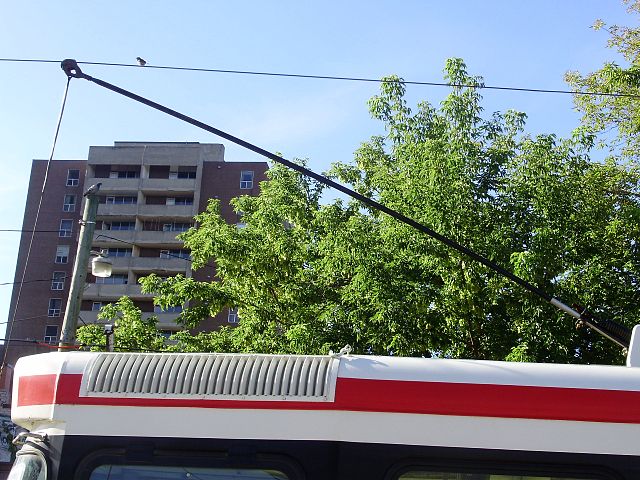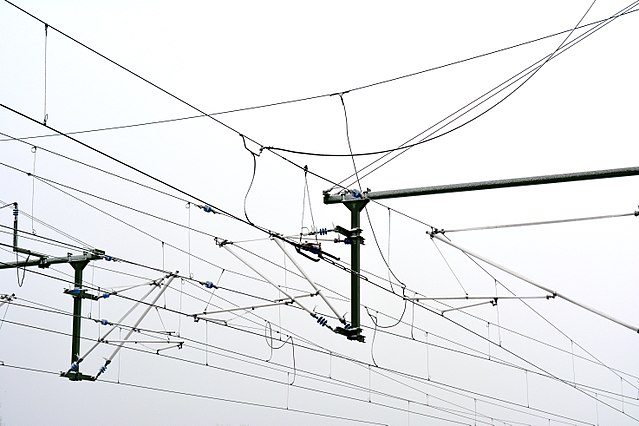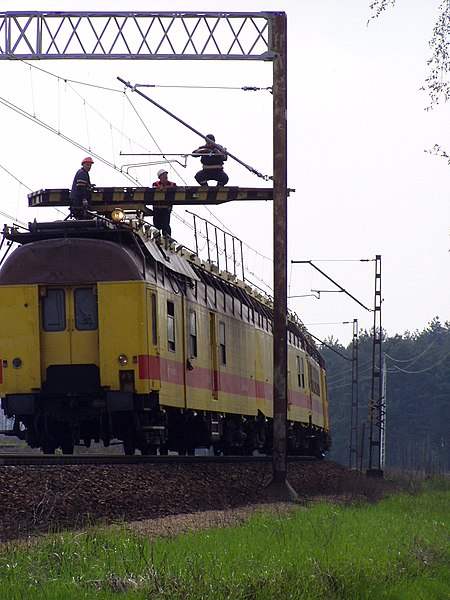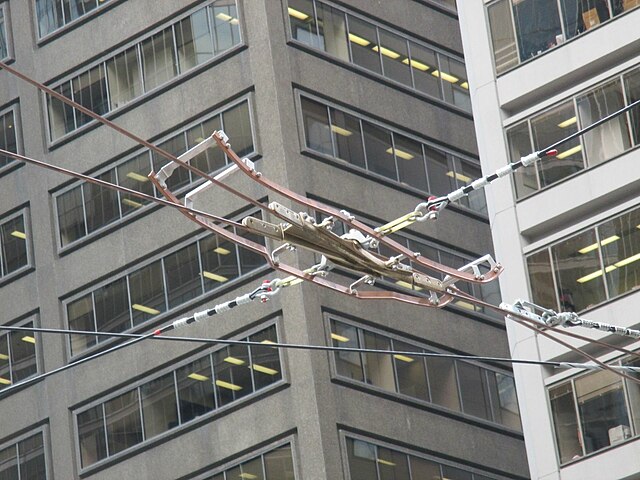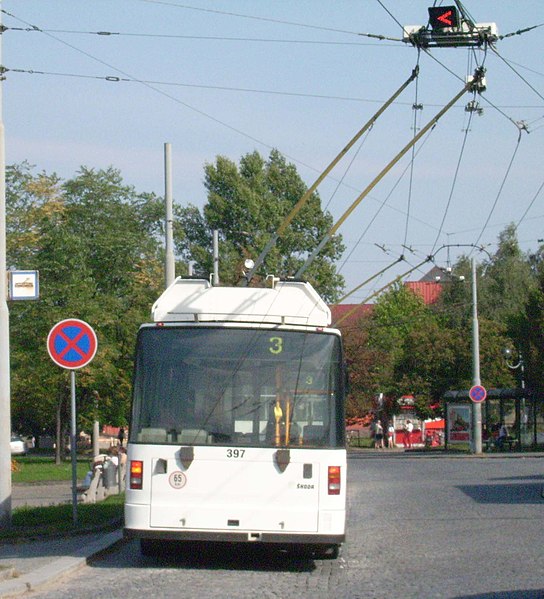A trolley pole is a tapered cylindrical pole of wood or metal, used to transfer electricity from a "live" (electrified) overhead wire to the control and the electric traction motors of a tram or trolley bus. It is a type of current collector. The use of overhead wire in a system of current collection is reputed to be the 1880 invention of Frank J. Sprague, but the first working trolley pole was developed and demonstrated by Charles Van Depoele, in autumn 1885.
Trolley pole on a Toronto streetcar, tipped with a trolley shoe
A trolleybus with a pair of trolley poles on the roof
Machining spare trolley pole wheels
Trolley pole wheel on Twin City Rapid Transit Company No. 1300
An overhead line or overhead wire is an electrical cable that is used to transmit electrical energy to electric locomotives, electric multiple units, trolleybuses or trams. The generic term used by the International Union of Railways for the technology is overhead line. It is known variously as overhead catenary, overhead contact line (OCL), overhead contact system (OCS), overhead equipment (OHE), overhead line equipment, overhead lines (OHL), overhead wiring (OHW), traction wire, and trolley wire.
Overhead lines
Lineworkers on a maintenance of way vehicle repairing overhead lines (Poland)
Overhead over a switch in Toronto: Two runners for pantographs flank the trolley pole frog.
A switch in parallel overhead lines

